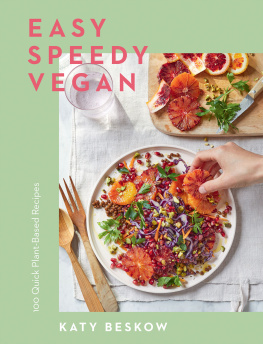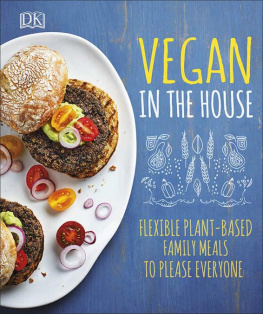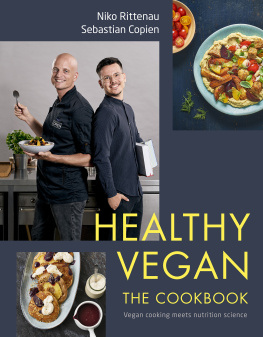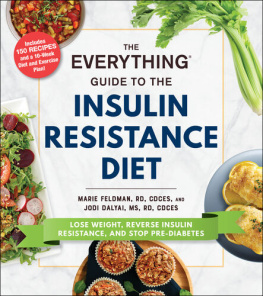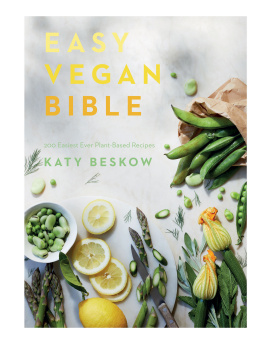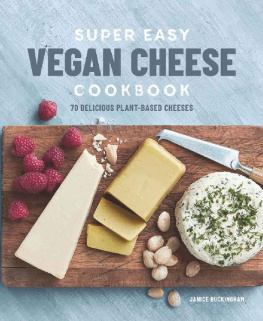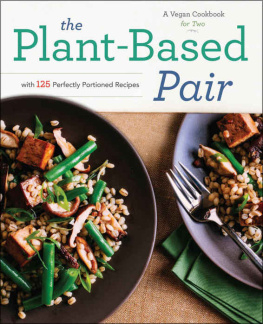The author and publisher have provided this e-book to you for your personal use only. You may not make this e-book publicly available in any way. Copyright infringement is against the law. If you believe the copy of this e-book you are reading infringes on the authors copyright, please notify the publisher at: http://us.macmillanusa.com/piracy.
Ive always loved being in the kitchen. My earliest food memory is of me standing on a little step stool helping my 90-year-old Russian great-grandmother make kreplach. Helping might not be that accurateI was probably three or four years oldbut I was there, where all of the action was, and I never left!
Growing up, I did my homework at the kitchen table, waiting for my mother to come home so we could make dinner together. I loved waking up on Sundays to help my father make his famous hash browns and eggs-in-a-hole. (It was my job to use a shot glass to make the hole.) We made all kinds of recipes, family favorites and holiday specials, bonding over eggplant Parmesan and potato pancakes and dry white wine and chocolate cake.
I went to college in Los Angeles, where I discovered California cuisine and new-to-me ingredients like avocados and artichokes and sourdough bread. After graduation, I moved back to New York, where I cooked for myself in my little galley kitchen, happily making old favorites and inventing new ones.
Eventually, I made the decision to go vegan after learning about how animals are raised for food, what animal agriculture does to the environment and how eating animals affects human health. I made myself one last bowl of shrimp scampi and said goodbye to animal products forever. But I woke up the next day and realized I had no idea what to do in the kitchen. Basically, I had to learn how to cook all over again.
And when I say learn how to cook all over again, it wasnt that I needed to learn how to cook. I knew how to saut and steam and roast and boil and bake. I needed to figure out what to cook. For some reason, it didnt seem all that easy, so I just ate out a lot. Luckily, I live only nine blocks away from Candle Cafe, one of the best vegan restaurants in town. But, eventually, I was inspired to learn everything I could about vegan ingredients and how to cook them. I love a good project, so I picked up a couple of vegan cookbooks and took a plant-based nutrition course, a plant-based professional cooking course and an essential vegan baking course.
I researched and taste-tested and played around in the kitchen. It wasnt always pretty, but it sure was fun. I spent hours working out ways to elevate plants from side-dish status to the center of my plate. To make it happen, I filled my pantry and refrigerator with all kinds of ingredients that, just a few short years earlier, I literally didnt even know existed, using them to build flavor, inspired by cuisines from all over the world. I started making really delicious, satisfying and mouthwatering vegan meals in my own kitchen! How?
I added fresh herbs like parsley and chives to my weekly shopping list. I got a citrus zester and a garlic press. I bought some Aleppo pepper, which is kind of like a milder, fruity version of crushed red pepper and one of my favorite spices. (Get a jarI promise you will love it too.)
I expanded my vinegar collection beyond balsamic and bought bottles of tamari, tubs of miso, bags of nutritional yeast and jars of umeboshi paste. If you just read that last sentence and you have no idea what Im talking about, dont worry, by the time you get from A to Z you will!
In the pages that follow, you will find an alphabetical list of 26 star ingredients, a fun way to initiate you into the vast world of plant-based cooking. And when I say vast, I mean vast! Because, if you think about it, with the exception of meat and dairy, everything is already vegan, and thats a lot of food! Fruits and vegetables. Grains and greens. Legumes and beans.
So, I curated this list of ingredients not just because they are vegan but because they are awesome. Straight up fruits and vegetables like beets, dates, eggplant, kale, portobellos and zucchini. Whole grains like oats, quinoa, rice, barley, millet and buckwheat. Protein-rich ingredients like garbanzo beans and lentils. Flavor makers like coconut milk, herbs, miso, umeboshi and vinegar.
And then there are those ingredients that are more likely to be found in a vegan kitchen. Aquafaba, the coolest egg replacer since sliced bread. Jackfruit, the plant-based white meat. Nutritional yeast, a flaky seasoning that tastes like cheese. Tempeh and tofu, soy-based plant proteins. But I am here to tell you that once you understand what they areand how to cook with themthey will soon have a place in your kitchen too!
Altogether, these ingredients make up a little universe, crisscrossing these pages, showing up in recipes as supporting actors even when they are not the star of the show, working together to bring out their potential for deliciousness. Because with a little imagination and creativity, every single one can be transformed into drool-worthy meals from flavorful, hearty soups and salads to plant-based tacos, omelets, lasagna, steak, cake and more!
As you cook your way from A to Z, you will find nutritional information, fun facts like why people think beets taste like dirt and how ancient foods like quinoa survived to become modern-day superfoods, nutritional information, how-tos and answers to your most frequently asked questions like Where do you get your protein?
In the end, you will be so familiar with each and every ingredient that you will be able to walk into your kitchen with confidence and whip up a tasty meal like a plant-based pro.
So, what are you waiting for? Get cooking!

Aquafaba is a fancy name for the liquid in a can of beans that you most likely pour down the drain. Turns out, its a fantastic plant-based, vegan egg replacer that was discovered back in 2015 by a guy named Goose Wohlt, who was asked to make vegan meringues for a Passover Seder. Meringues are traditionally made from whipped egg whites, so this presented quite a challenge. After some research and experimentation, tapping into earlier work done by a French gastronome named Jol Roessel, he found success.
Wohlt posted his win in a comment on Facebookdead simple delicious two ingredient whole food meringues one can chickpea brine mixed w half cup sugar. perfect-Oalong with pictures of fluffy, white meringues. It went viral and, within days, everyone was in their kitchens whipping up meringue, including me.
Why did it work? A chemical analysis found that the liquid, or the brine, that results from cooking beans is similar in its chemical makeup to actual eggs, a combination of proteins, starches and saponins, which means it could do the same thing as eggs do in recipes, including emulsifying, coagulating and foaming. Wohlt started a revolution and needed a good name for it. He went with aquafaba, an amalgam of the Latin words for water and bean, because, lets face it, it sounds better.



